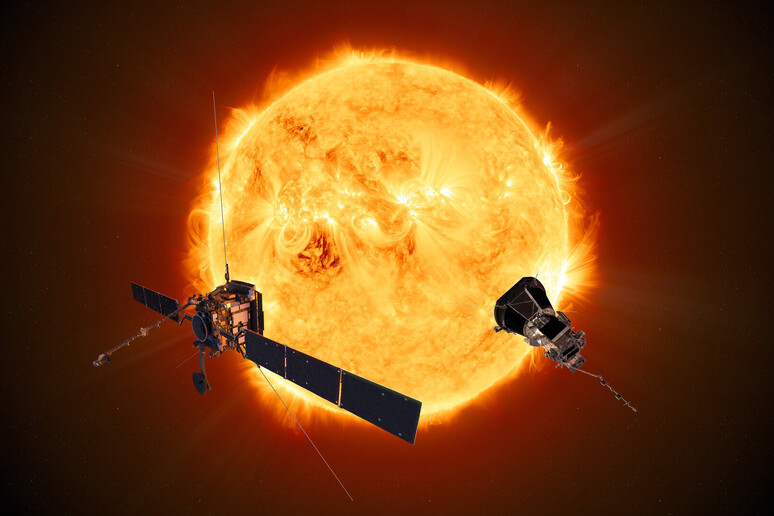Scientists have aligned two probes to undertake the first simultaneous measurement of the properties of the Sun's atmosphere, or corona. The achievement, the result of a collaboration between Nasa's Solar Orbiter and the European Space Agency's Parker Solar Probe, represents a step forward in solving the 65-year-old mystery of why, at around one million degrees, the corona is around 150 times hotter than the Sun’s surface, at 6,000 degrees. The research is described in a paper published in The Astrophysical Journal Letters and led by Italian Daniele Telloni of the National Institute of Astrophysics.
The Sun's atmosphere is made up of an electrically charged gas called plasma. In theory, it should be cooler than the surface because the Sun's energy comes from reactions in the core, and under normal circumstances matter cools as it moves further away from the heat source. But for the Earth’s star, other mechanisms seem to be at work.
The research was conducted by the team responsible for the Solar Orbiter's Metis instrument, built for the Italian Space Agency by Thales Alenia Space and OHB Italia, which takes pictures of the solar corona. Attitude sensors made in Italy by Leonardo, which are on board both missions, allowed the two probes to align.
Riproduzione riservata © Copyright ANSA













